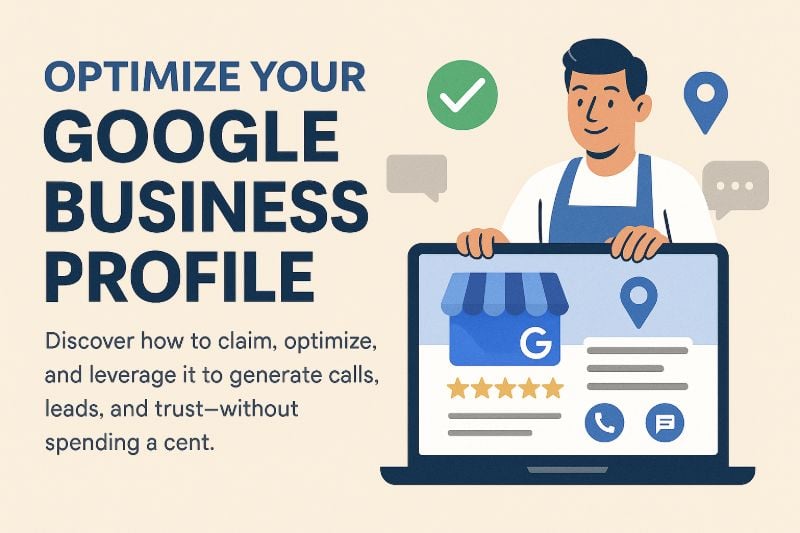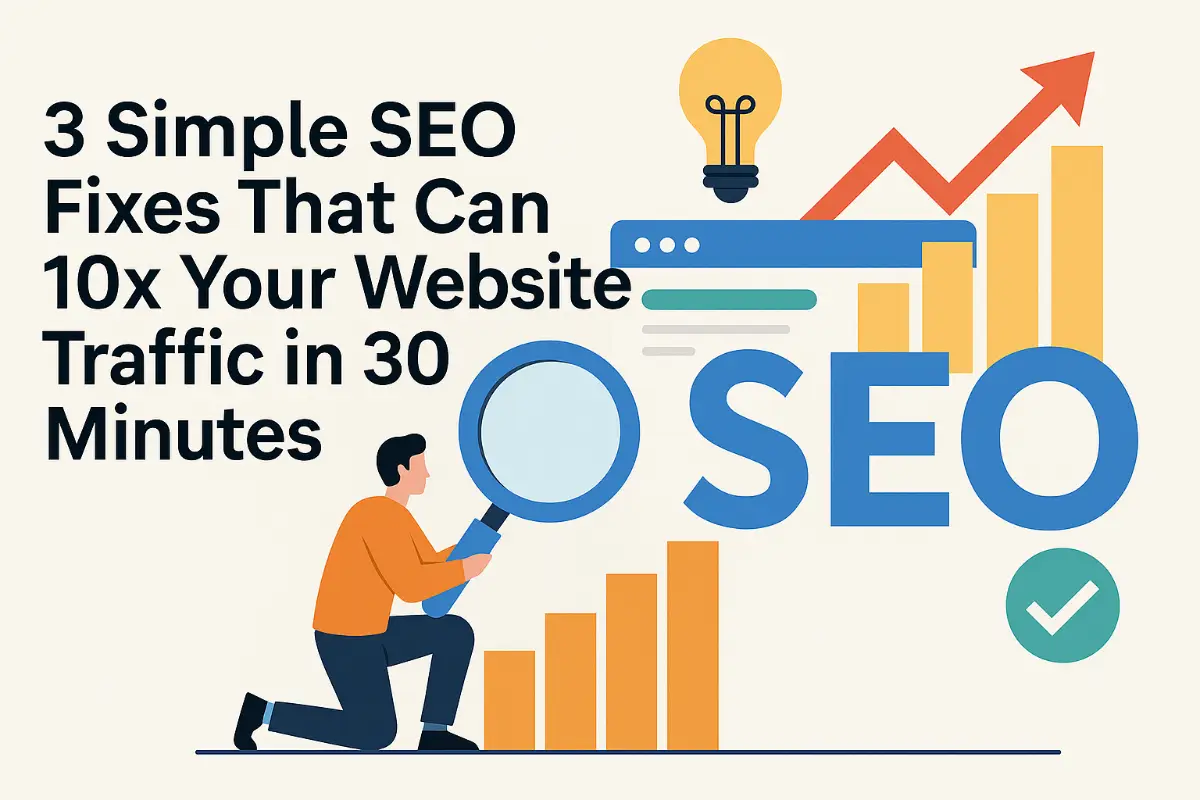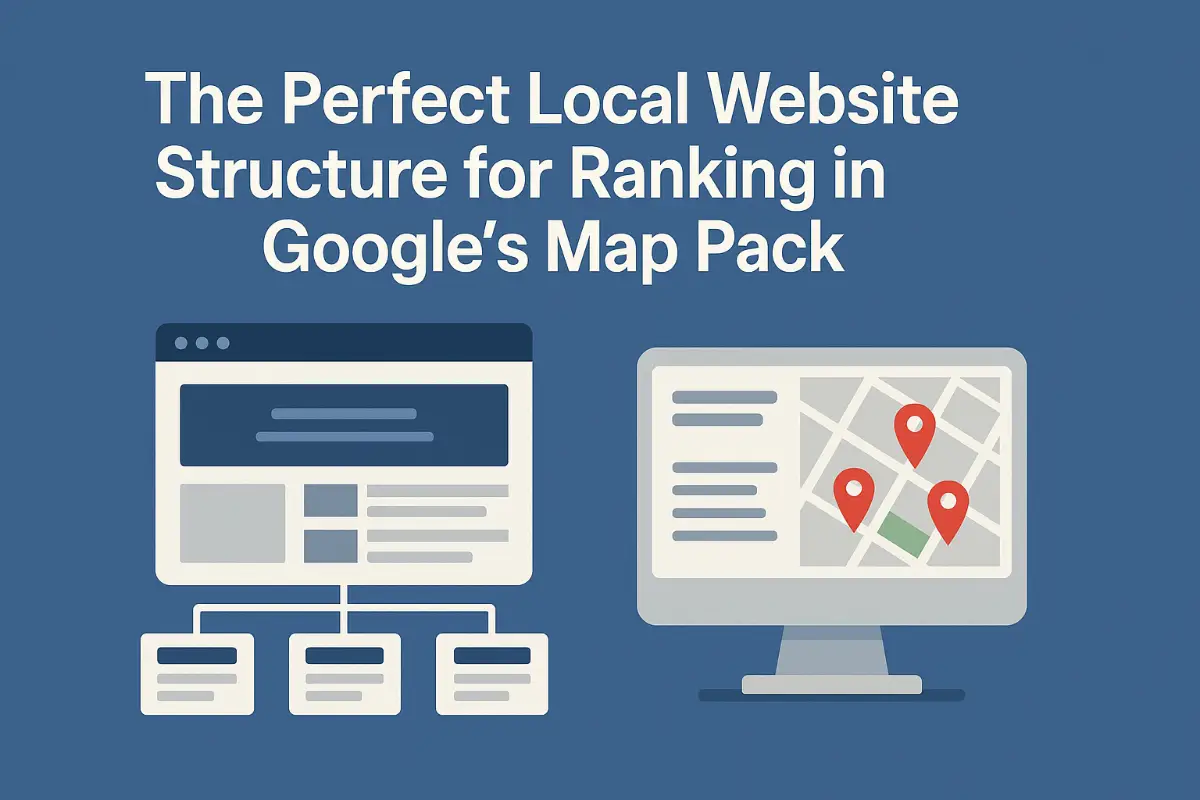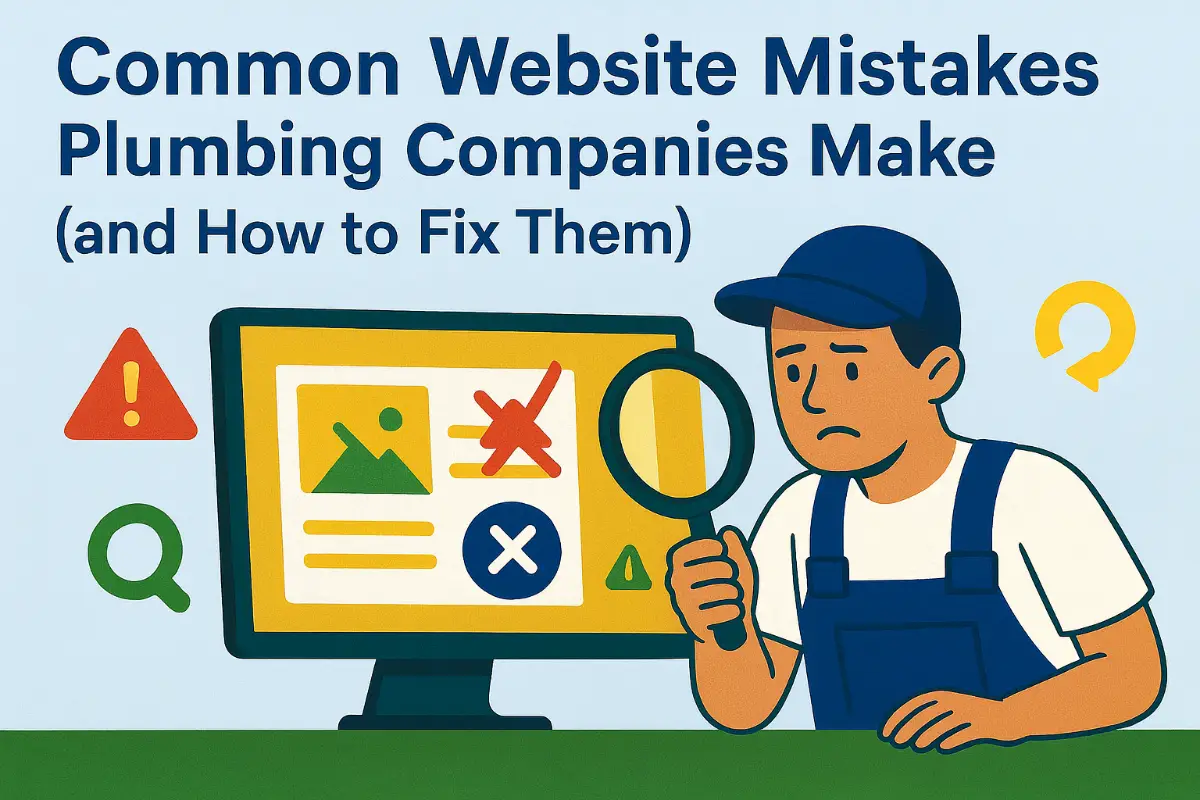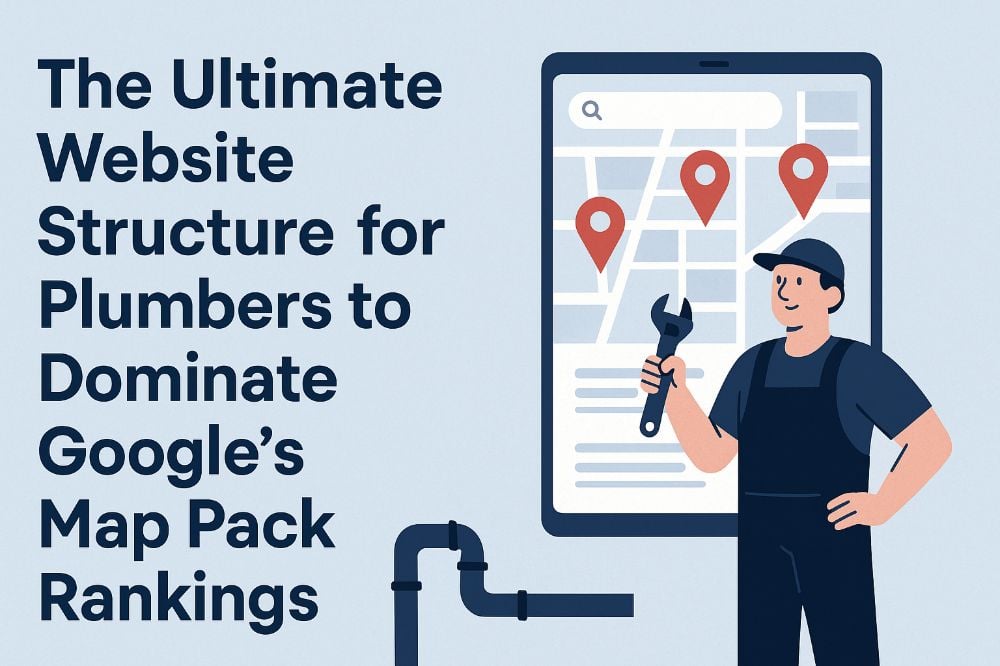
The Ultimate Website Structure for Plumbers to Dominate Google’s Map Pack Rankings
The Ultimate Website Blueprint for Plumbers to Dominate Google’s Map Pack Rankings
If you're a plumbing business striving to appear in Google's coveted Map Pack, your website could be your greatest ally, or your biggest obstacle. While many owners prioritize gathering reviews or running paid campaigns, the foundational architecture of your site significantly influences whether your Google Business Profile lands in those elite top three map positions.
Regardless of whether you're handling emergency drain cleaning in Atlanta, pipe repairs in Seattle, or water heater installations in Miami, a strategically designed plumbing website does far more than present a professional image. It communicates to Google precisely what services you provide, the areas you cover, and why your operation stands out from the crowd.
This in-depth guide explores how to architect your website to bolster your local SEO efforts and elevate your presence in the Map Pack. We'll cut through the noise with actionable, evidence-based advice that delivers results.
Introduction: What We'll Cover in This Guide
- Homepage Optimization: Targeting Your Core Service and Location - Learn how to make your homepage a powerhouse for local relevance.
- Aligning GBP Categories with Service Pages: Creating a Hierarchical Structure - Build pages that echo your Google Business Profile for maximum synergy.
- The Power of Supporting Content and Strategic Internal Linking - Enhance authority with blogs, FAQs, and smart connections between pages.
- Crafting Local Landing Pages: Expanding Reach to Surrounding Areas - Target suburbs and neighborhoods without duplicating content.
- Optimizing Links and User Journeys: Best Practices for Flow and Conversion - Ensure seamless navigation that benefits both users and search engines.
- Building a Site That Secures Lasting Map Pack Success - Tips on implementation and how WebPresence can assist.
By following these steps, you'll create a website that not only ranks higher but also converts visitors into loyal customers. For related insights, check out our complete guide on how to optimize your Plumbing Google Business Profile and Website to rank first. or explore our GBP optimization services.
Homepage Optimization: Targeting Your Core Service and Location
The homepage serves as the cornerstone of your plumbing website's local SEO strategy. It typically accumulates the highest domain authority, attracts the most inbound links, and garners significant traffic, making it essential to align it closely with your primary service and target city.
For instance, if you're a plumber specializing in residential repairs in Orlando, center your homepage around terms like “Plumbing Services Orlando” or “Orlando Emergency Plumbing.” Incorporate this precise phrasing into critical elements such as:
- Page Title: Plumbing Services Orlando FL | Trusted Pipe Repair & Drain Experts
- H1 Heading: Dependable Plumbing Solutions in Orlando, Florida
- Meta Description: Highlight your key offerings and service radius.
- Opening Paragraph: Immediately affirm your expertise and geographic focus.
Additionally, integrate these features to strengthen local signals:
- A concise overview of primary services, linking to dedicated pages for deeper details.
- A dedicated “Areas We Serve” segment listing nearby cities or districts.
- Brief descriptions for each major category from your Google Business Profile, like drain cleaning or leak detection.
- Display Google reviews prominently, with a prompt for users to submit their own.
- An integrated Google Map pinpointing your location or central operational zone.
This approach succeeds because it synchronizes your homepage with your Google Business Profile data, emphasizing identical services and locales. This alignment boosts relevance, signaling to Google that your business is a prime candidate for Map Pack inclusion. In competitive markets like Orlando, where searches for “plumber near me” are frequent, such optimizations can tip the scales in your favor.
To illustrate, consider a plumber in Chicago who revamped their homepage to feature “Chicago Plumbing Repairs” prominently. Within months, their Map Pack visibility surged, leading to a 40% increase in service inquiries. Drawing from our experience at WebPresence, we've seen similar transformations—check our guide on GBP tools for complementary tactics.
Aligning GBP Categories with Service Pages: Creating a Hierarchical Structure
Your website must echo the categorization in your Google Business Profile to maximize SEO impact. This involves a layered approach: broad category hubs for overarching offerings and specialized service pages for granular details.
Category pages draw from your GBP labels, such as “Plumber,” “Drain Cleaning Service,” or “Water Heater Installer.” These act as central gateways, introducing clusters of associated services.
Service pages delve deeper, spotlighting specific jobs like sewer line replacement, faucet installation, or boiler maintenance.
For a plumbing firm in Denver, CO, this might look like:
- Category Page: Plumbing Services in Denver, CO
- Service Pages:Clogged Drain Clearing
- Water Heater Repair and Installation
- Burst Pipe Emergency Response
- Sump Pump Servicing
On each category page, include:
- An introduction to the encompassed services.
- Links directing to individual service pages.
- A broad keyword target, e.g., “plumber Denver CO.”
For service pages, ensure they cover:
- A detailed explanation of the service.
- Your unique delivery method and differentiators.
- Authentic images from past projects.
- A compelling call-to-action, such as “Schedule a Free Inspection” or “Contact Us for Immediate Help.”
This setup enhances site usability, targets a wide array of search terms, and positions you as a specialist. It aids in ranking for both general queries like “plumber in Denver” and specifics like “water heater repair near me.” In our work with plumbers, this structure has consistently improved Map Pack placements—explore our complete local SEO packages for hands-on implementation.
The Power of Supporting Content and Strategic Internal Linking
While service pages form the backbone, supplementary materials like blogs, FAQs, case studies, and area-specific articles amplify their effectiveness. These elements expand keyword coverage, address user queries, and foster trust with both Google and potential clients.
Visualize your site as a community: service pages are the residences, and internal links are the pathways connecting them. Proper linking facilitates Google's crawling, clarifies your site's organization, and channels authority to priority pages.
Key steps include:
- Developing Supporting Content: Produce blogs tackling common issues, procedural explanations, or comparisons of options.
- Intelligent Internal Linking: Connect blogs to services with descriptive anchors, e.g., “sewer repair in Phoenix.”
- Cross-Service Links: From a page on toilet installation, link to related ones like pipe relining or fixture upgrades.
- FAQ Integration: Embed FAQs on service pages or create a central hub linking to in-depth resources.
For a plumber in Phoenix offering leak detection, supportive pieces might include:
- “Top Indicators of Hidden Leaks in Arizona Homes”
- “Average Lifespan of Plumbing Fixtures in Hot Climates”
- “Choosing the Right Water Softener for Phoenix Water Quality”
Each should funnel back to your leak detection page, elevating its authority for primary and secondary terms. Pro tip: Always steer readers toward action—use content to guide them to bookings. This not only aids SEO but aligns with insights from our quick SEO fixes article.
Crafting Local Landing Pages: Expanding Reach to Surrounding Areas
For plumbers servicing multiple locales, dedicated local landing pages are vital to compete in varied searches. They enable visibility for queries in adjacent towns, even if your base is elsewhere.
Suppose your headquarters is in Houston, but you cover Katy, Sugar Land, and The Woodlands. Develop pages like:
- Plumbing Services Katy TX
- Sugar Land Drain Cleaning Experts
- Emergency Plumbing in The Woodlands
Each should feature:
- A tailored introduction naming the area.
- Specifics on services provided there.
- Local challenges, e.g., “hard water issues in suburban pipelines” for water treatment.
- References to local roads, communities, or landmarks.
- Prominent CTAs and contact methods.
Avoid pitfalls: Steer clear of templated duplicates by customizing each for authenticity—Google penalizes thin or replicated content.
These pages affirm your regional activity, bridging gaps for searches like “plumber in Katy” from a Houston-listed business. Properly executed, they can solidify your dominance across suburbs. For more on this, see our citation building services.
Optimizing Links and User Journeys: Best Practices for Flow and Conversion
Beyond page creation, how content interconnects and directs users is crucial. Google favors organized sites, but users demand intuitive paths to solutions and actions.
Internal Linking for Logic: Forge sensible connections to aid crawling and comprehension.
Best practices:
- Link homepage to core category pages.
- Connect categories to detailed services.
- Tie blogs back to relevant services with keyword-infused anchors, like “emergency plumbing in Atlanta.”
User Journey Optimization: Every page should propel visitors toward conversion, be it a call or quote request.
Enhance flow by:
- Positioning phone numbers and CTAs at the top.
- Employing mobile-sticky headers for constant navigation.
- Limiting menu items to 3-6 for simplicity.
- Adding forms on high-value pages to minimize friction.
Robust linking and low bounce rates indicate quality to Google, boosting SEO while fueling business growth. Integrate this with our general website structure guide.
Conclusion: Building a Site That Secures Lasting Map Pack Success
To thrive in Google’s Map Pack and maintain your position, treat your website as a dynamic ecosystem supporting your Google Business Profile and proving your value to searchers and algorithms alike.
From homepage refinements and layered service pages to interconnected content, localized landings, and fluid navigation, each component contributes to superior rankings. The outcome? Heightened local search presence, more inquiries, and increased jobs.
Ready to implement? At WebPresence, we craft high-converting websites tailored for local SEO dominance. Whether you're a plumber seeking better Map Pack exposure or need a full overhaul, our solutions deliver.
- Complete Online Packages – Comprehensive builds with SEO and ads integrated.
- SEO & Content Creation – Custom content to fuel your rankings.
Local searches for plumbing services are ongoing—ensure you're the first they discover.

About the Author
Bernard Schoeman
Farrell Bernard Schoeman is the founder and technical lead at WebPresence, a performance-driven SEO company dedicated to helping local service businesses grow through strategic digital marketing. In this role, he: Leads all SEO and Google Ads strategy and execution, with a focus on ranking local service businesses in both organic search and the Google Map Pack Builds and manages high-performance PPC campaigns, ensuring maximum ROI through precise keyword targeting, smart bidding, and landing page optimization Develops proprietary SEO systems powered by AI to scale content creation, on-page optimization, and local link-building efforts Conducts in-depth audits and strategy roadmaps for clients, aligning marketing tactics with business goals Serves as the direct point of contact for clients, providing transparent reporting, clear communication, and tailored growth plans Continuously refines WebPresence’s internal processes, tools, and service offerings to stay ahead of local algorithm shifts and marketing trends As the technical and strategic lead, Farrell brings hands-on expertise and a results-first mindset to every client partnership, ensuring each campaign drives real visibility, traffic, and revenue growth.

